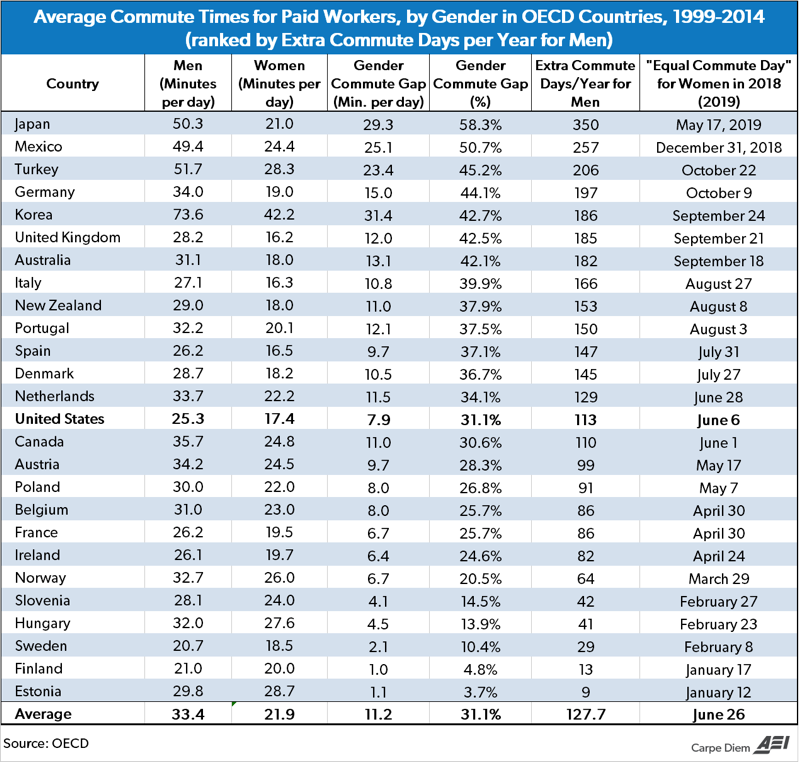Gender pay gap? Gender profession gap?
Now: the gender commute time gap.
Across the world, women are smarter than men: they choose to take jobs that require them commuting less.
Does that also mean they choose jobs that pay less so they can drive less?

Starting this week, there will be a lot of fanfare, hand-waving, hand-wringing, and calls for corrective legislation leading up to Equal Pay Dayon April 10, which is supposed to represent how far into this year the typical woman has to continue working full-time to earn what her male counterpart/co-worker earned in 2017. That annual day is supposed to be determined by the most recent gender earnings gap comparing unadjusted median earnings for year-round full-time workers (BLS data here show an 18.1% gender earnings gap in median weekly earnings for 2016, the most recent year available).
Actually, if you do the math, a gender earnings gap of 18.1% would mean that Equal Pay Day actually fell several weeks ago on March 20, a full three weeks before the day designated by the organization behind the annual event – the National Committee on Pay Equity (NCPE). Alternatively, using Census Bureau data for 2016, the slightly higher gender earnings gap of 19.5% for full-time, year-round workers would mean that Equal Pay occurred on March 27, two full weeks before the official day. And yet the NCPE declares authoritatively that “Tuesday, April 10, 2018, symbolizes how far into the year women must work to earn what men earned in the previous year.” Except that it really doesn’t, it’s a day that already occurred ….
One implication of Equal Pay Day is that blatant, widespread and illegal gender discrimination in the labor market is one of the main reasons for the gender pay gap, which can only be corrected with increased regulatory action and equal pay legislation at the federal and state levels. But economists have pointed for many years that there are many factors that explain gender differences in earnings including hours worked (“full-time” is defined as 35 hours per week or more, and men working full-time put in more hours per week on average than women), occupational and career choices, characteristics of occupations (risk of injury/death, family friendliness, flexibility in hours worked), and family and childcare choices among many factors.
And here are two more factors that haven’t received much attention but might help explain some of the unadjusted gender earnings gap: a) the 16% “geographical gender gap” that reflects the gender difference in the average distance that male and female college graduates move from their university for their first jobs after graduation (an average of 318 miles for women vs. 370 for men, suggesting that young men on average consider a wider geographical area for post-college employment, possibly resulting in higher pay) and b) the 31% “gender commute time gap” in the US that reflects the longer daily commute time on average for men (25.3 minutes) vs. women (17.4 minutes), see table above for 26 Organization for Economic Co-operation and Development (OECD) countries including the US. The average daily commute times by gender are from the OECD Family Database (available here, see Excel file for “LMF2.6 Time spent traveling to and from work”) and a summary of those data are displayed in the table above for 26 OECD countries.